Videos need subtitles. These texts allow viewers to visually connect with your content, regardless of whether they’re watching a Parasite on Netflix, PewDiePie's latest antics on YouTube, or Jimmy Fallon on Facebook.
Plus, every viewer has unique preferences. Some like to keep their audio off; some prefer reading captions as well as hearing the audio. To cater to these individual tastes, you need inclusive videos that resonate better with the audience—something that adding SRT files make possible.
SRT files, also known as the SubRip Subtitle files, are a plain-text file that lets you edit and control exactly what gets displayed on your viewer’s screen. They contain critical information related to your video captions, like the start and end timestamps of your text and the sequential number of subtitles.
Ever wondered how the video text always matches the audio? Now you know the answer.
The fact SRT files boost your engagement rate on social media, expand your global reach, and improve your YouTube video score is another benefit.
Excited to know more? Here's a 5-second overview of how to create an SRT file:
- Sign up for a VEED account.
- Select Create New Project on the main dashboard.
- Upload your final video from your device or Dropbox. You can also copy-paste a YouTube link or record a brand-new video. VEED’s pretty flexible.
- Select Subtitles on the side toolbar and click Auto-Transcribe to generate closed captions.
- Choose the language your video is in to start generating captions.
- Do a quick spelling and grammar check. You don’t want silly mistakes in your captions, so you?
- Go to ‘Options’ and click to download the SRT file and be done!
SRT File Example (What Do They Look Like?)

That’s what an SRT file looks like for a 9-second video, complete with three sections, three timestamps, and three texts.
- Every numbered section (1, 2, 3) indicates the exact text that'll be displayed on the screen.
- Just below that, you’ll find the starting and ending timestamps of that particular section (00:0000,200 - -> 00:00:02,600), which is how the computer will know what text to display at what time.
- Finally, you see the actual text (“So this is a video example and I just want to show you”) that will be displayed on the screen for the specified time period of that particular section.
3 Best Ways to Create SRT Files (Based On Your Budget and Time Available)
An SRT file is a simple, DIY solution for adding subtitles to your video content, but it can feel overwhelming if you don’t have the right guidance—or the tools.
Below is the list of the top three best ways to create SRT files based on your budget and availability.
#1 TextEdit/Notepad: If you’re on a zero dollar budget and don’t mind having to type things out
If you don’t have the budget to buy a premium video editor, you can use the good ol’ text editor on your computer. Mac users have TextEdit pre-downloaded on their devices, while Windows users can use Notepad.
Disclaimer: This method can get long depending on the video length. So make sure you clear your schedule and are prepared to type—a lot!
For Mac Users:
- Open TextEdit on your Macbook.
- Type the number 1 to indicate the start of the first caption sequence. Then press Enter.
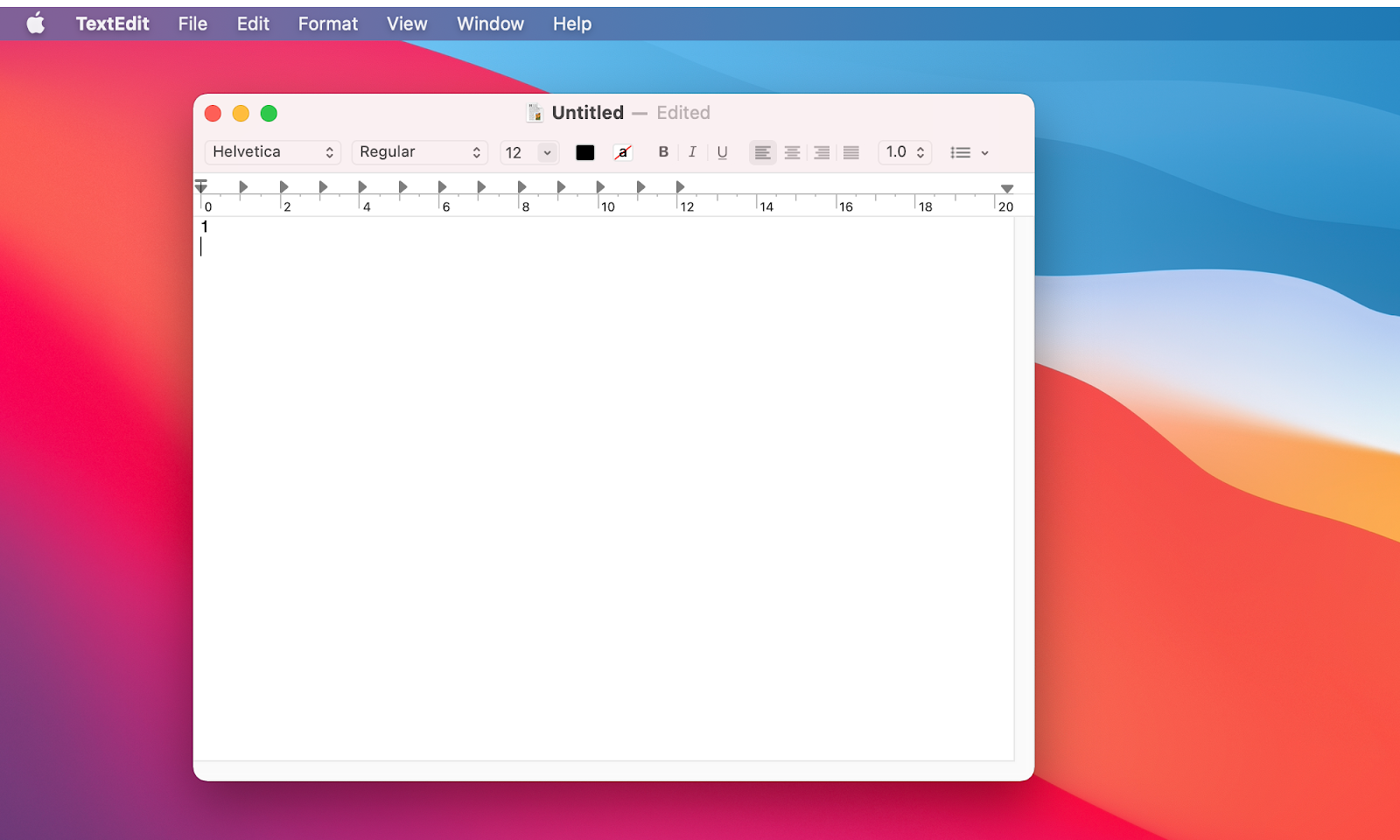
- Type the beginning and ending timecode for this section using the following format: hours:minutes:seconds,milliseconds – -> hours:minutes:seconds,milliseconds
- Press Enter.
- In the next line, start typing your captions. Generally, it’s best to limit your subtitles to 32 characters, with two lines for every caption, to avoid overwhelming the viewer. Also, nobody likes a cluttered screen.
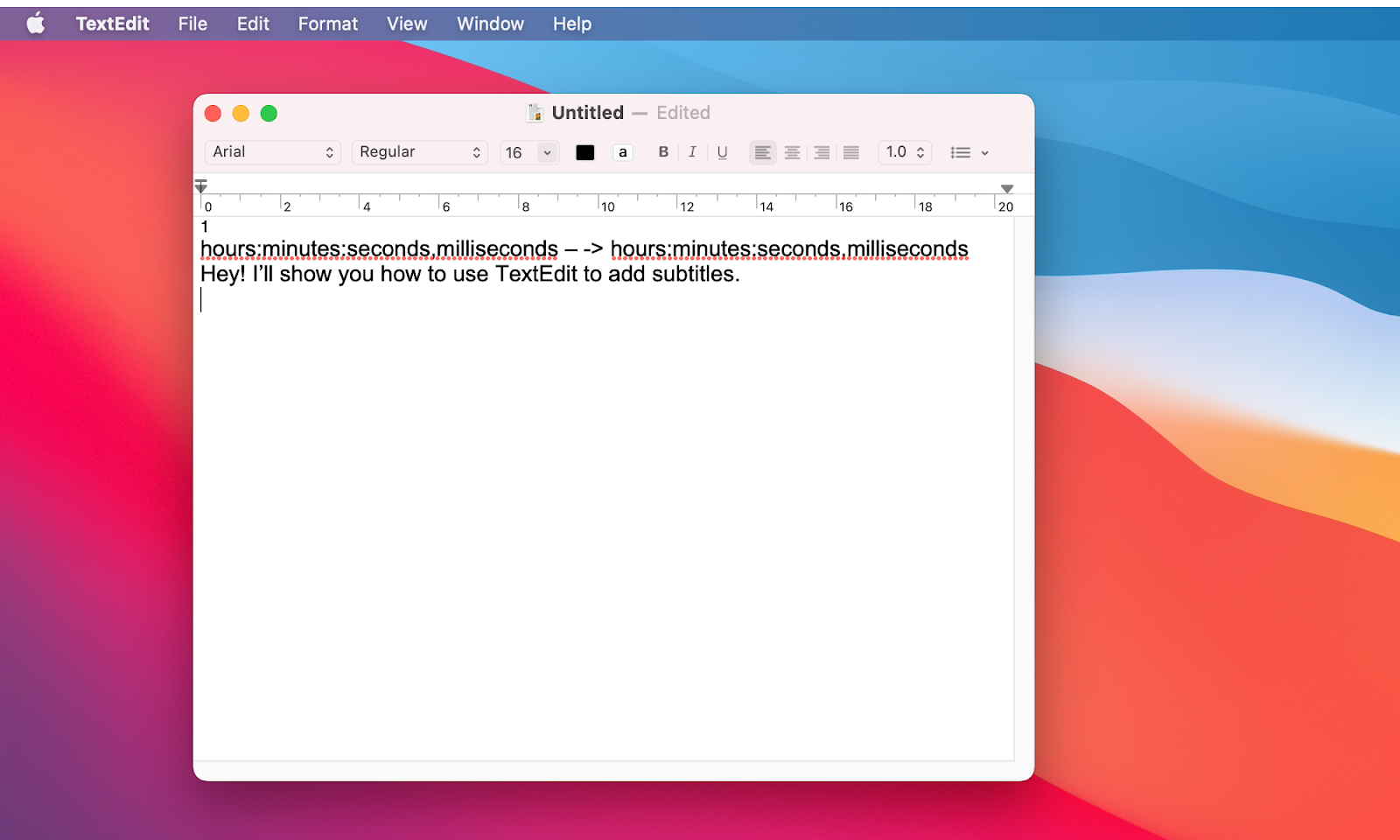
- Once you’re finished typing the last line of text in the sequence, press Enter twice. Make sure you leave a blank line before starting a new caption sequence.
- Type the number 2 after the blank line. This will indicate the beginning of the second caption sequence.
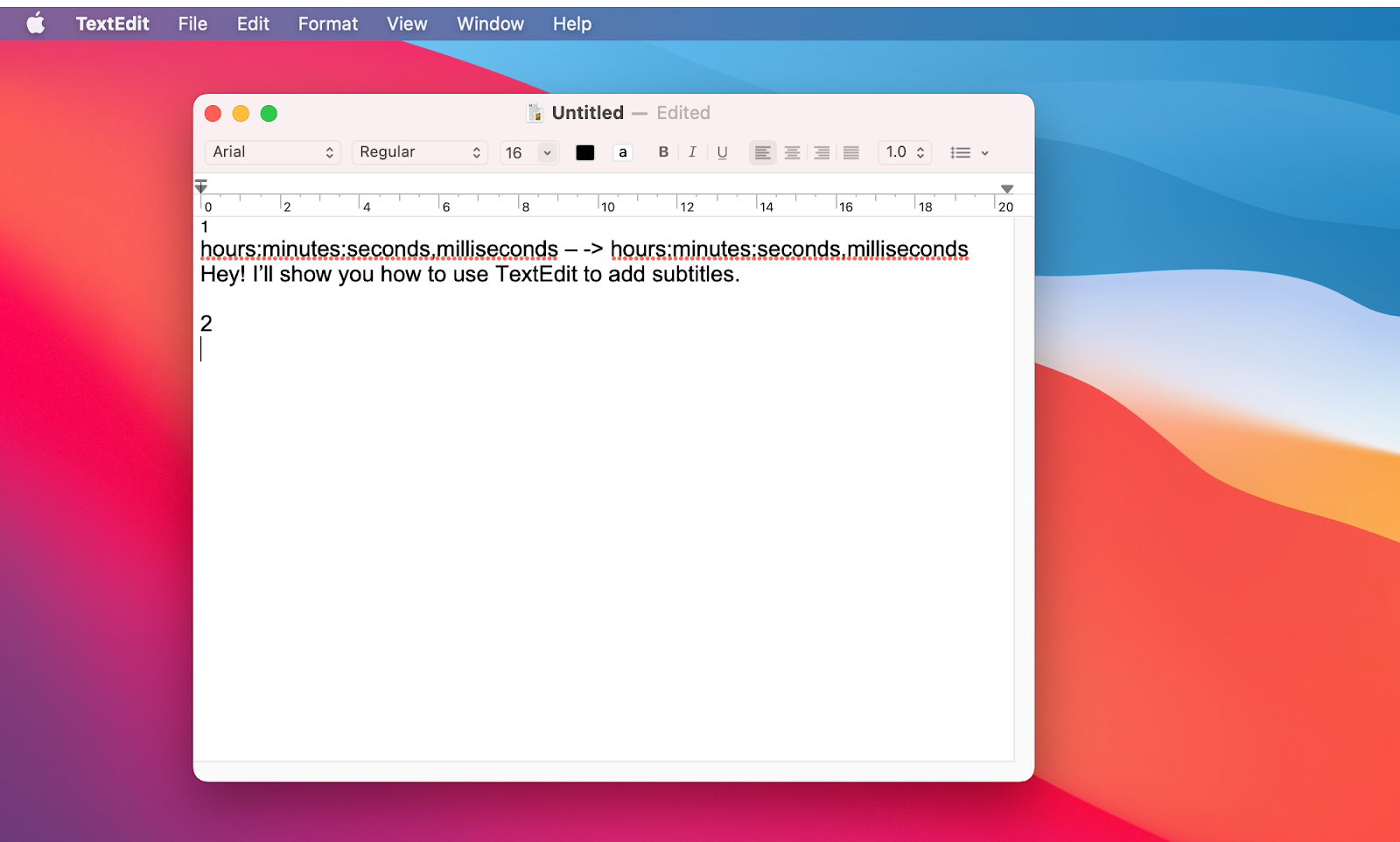
- Repeat the above steps until you complete your transcript.
- Next, you have to save your file as an .srt. Click on Format, followed by Make Plain Text on the top menu bar. Click OK.

- Select File and then Save. Under the Save as option, type the name of your file before changing the file extension from .txt to .srt. Uncheck If no extension is provided, use “.txt”. Finally, select Save.

Congratulations! You can now upload closed captions to your videos.
For Windows Users:
Creating an SRT file for Windows is similar to Mac. No joke. The only difference is that instead of TextEdit, you use Notepad.
Here's what the format should look like when you create an SRT file on TextEdit or Notepad:
[Section of subtitles number]
[Time the subtitle is displayed begins] –> [Time the subtitle is displayed ends]
[Subtitle]
To get the timestamp formatting right, show:
[hours]: [minutes]: [seconds], [milliseconds]
What else can TextEdit or Notepad do?
TextEdit and Notepad are just what you expect them to be: a simple text editor where you type. Nothing fancy.
- Collaborative Editing: Feeling tired doing all the typing? No biggie, you can have someone else from your take over.
- Coding Capabilities: TextEdit offers coding features, such as syntax highlighting, autocompletion, find and replace, and so on. Not that you'll need them, but we just wanted to let you know.
#2 Rev: If you want the SRT file as accurate as possible, want to save time, and have a higher budget to be billed on a per-minute basis
Rev is a super popular audio and video transcription service that’s ready to do all the hard work for you accurately and reliably—provided you have the budget to accommodate their per-minute billing.
You have to place an order with Rev for video closed captions or subtitles, after which a vetted team of native freelancers will transcribe your video in the SRT format. You can send the video by either uploading it directly from your computer, sharing a public URL, or automating uploads with API, Zapier, or using video platform integrations.
No matter how difficult the audio, diverse the accent, or the number of speakers, Rev can deliver and deliver well. Let's take a look at how you can use this tool to create an SRT file.
- Go to Rev’s Caption service page and select Get Started.
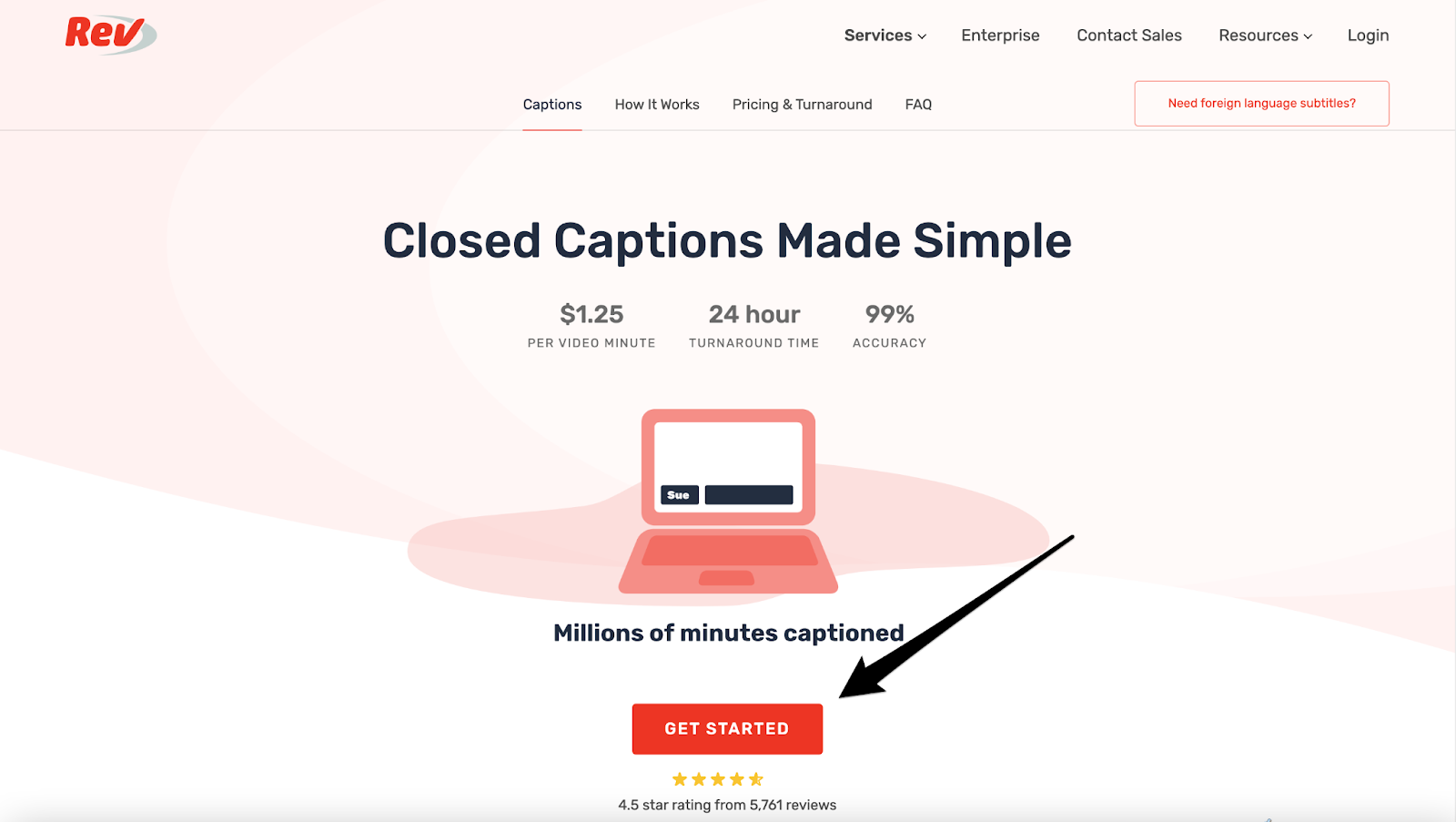
- Decide how you want to share your video. You can either upload your file from your computer or paste a public web address. Alternatively, you can also upload videos directly from YouTube or Vimeo.
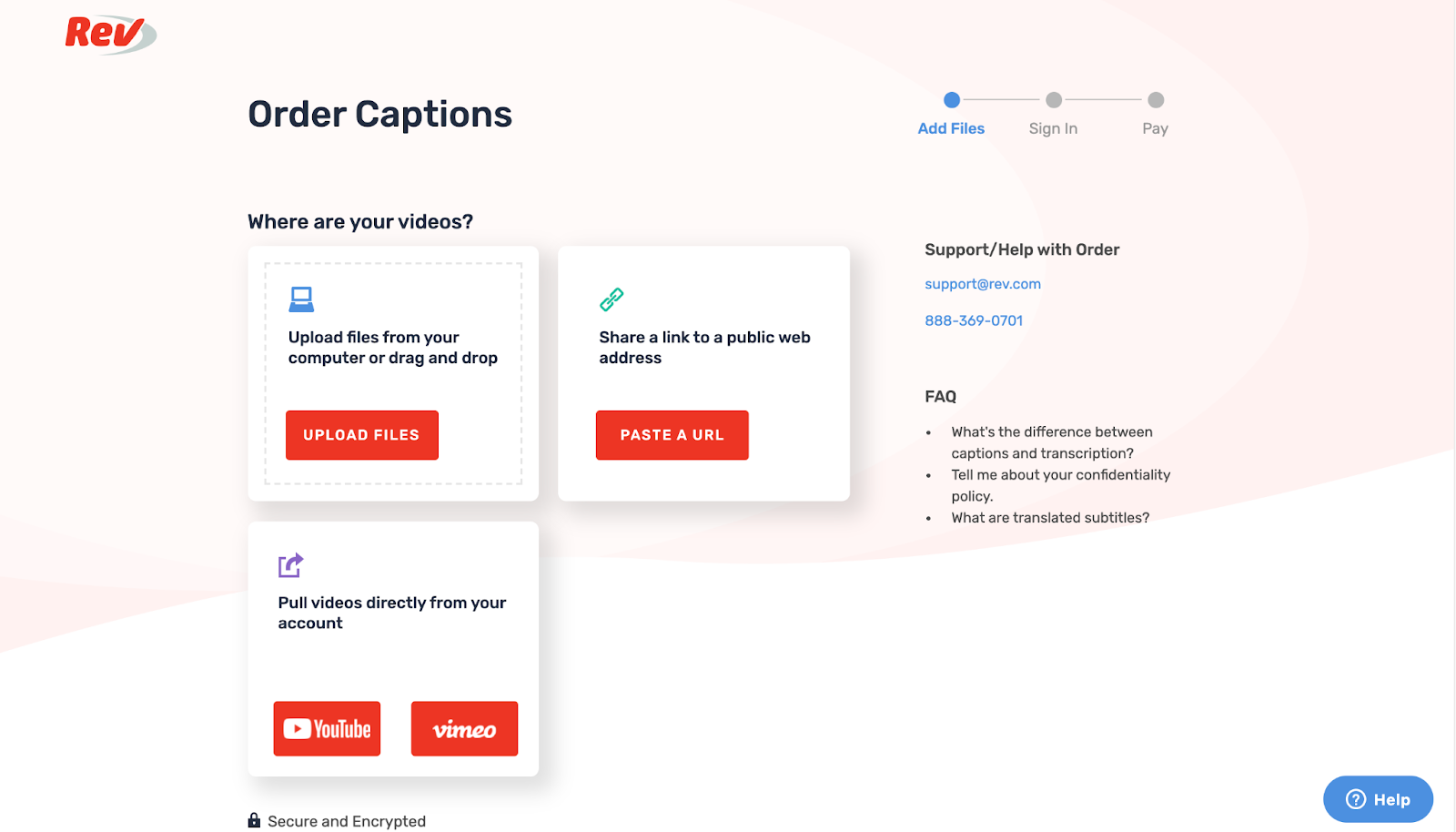
- After adding the video, all that’s left is to pay. Keep in mind your total is calculated at $1.25 per minute, so the longer your video, the higher the charge. Click on the Checkout button to finalize the deal.

And that’s it! Rev's network of freelancers will then work their magic and give you a nearly 99% accurate file.
Notice how the Output File Format is automatically set to SubRip(.srt) on the Checkout page? Yup.
What else can Rev do?
- Transcription: You can place orders to get your videos transcribed with Rev. All your transcripts are delivered as editable and shareable documents.
- Live Captions for Zoom: Online meetings on Zoom are the norm now. To help team members communicate better and effectively, Rev offers a Live Captions service that automatically adds real-time captions to Zoom meetings and webinars.
- Speech-to-Text APIs: Rev’s speech recognition model is built on 50,000+ hours of representative training data, making it one of the most reliable and fast models on the market. You can directly integrate its API to build human and automatic speech-to-text solutions into your product or service to auto-generate transcriptions, subtitles, and captions—language no bar.
- Caption: This service is what we discussed above. Rev’s closed caption service helps maximize value from your existing videos by allowing your viewers to enjoy your content even with the audio off. It’s actually very similar to its Transcription service.
- Rough Draft: Rev can use artificial intelligence to transcribe your video file within minutes. However, the automatic transcription isn’t 100% accurate (hence, the name “Rough“) so running a spellcheck is crucial before publishing the file.
#3 VEED: If you want an accurate SRT file and video editing tool in one for a reasonable monthly or annual fee
VEED is an amazing online video editor that makes video easy. And no, this isn’t us blowing our own trumpet.
✅ Make stunning videos? Check.
✅ Cut, trim, crop videos? Check.
✅ Add subtitles and create .srt files? Double-check!
From business presentations to review videos to vlogs, you can use this tool to edit and enhance—even if you have zero video editing experience. Below is a step-by-step breakdown of how to create an SRT file using VEED.
- Click here to make a free VEED account. The platform offers a magic link registration, which makes signup super fast and convenient.
- Select Create New Project from the main dashboard. Try to upload a video in its final form, with all the edits and cuts being taken care of. If you edit the video after making the SRT file, the timestamps will no longer match the actual video.

Note: You may also click on Upload Your Video directly from VEED's website and create your account during the process.
- Upload the video directly from your device or Dropbox. Pasting a YouTube link or recording a brand-new video—something that can be incredibly handy for vloggers—is also possible. Convenient, right?
- Once uploading is complete, click on Subtitles on the toolbar on your left, and then select Auto Transcribe.
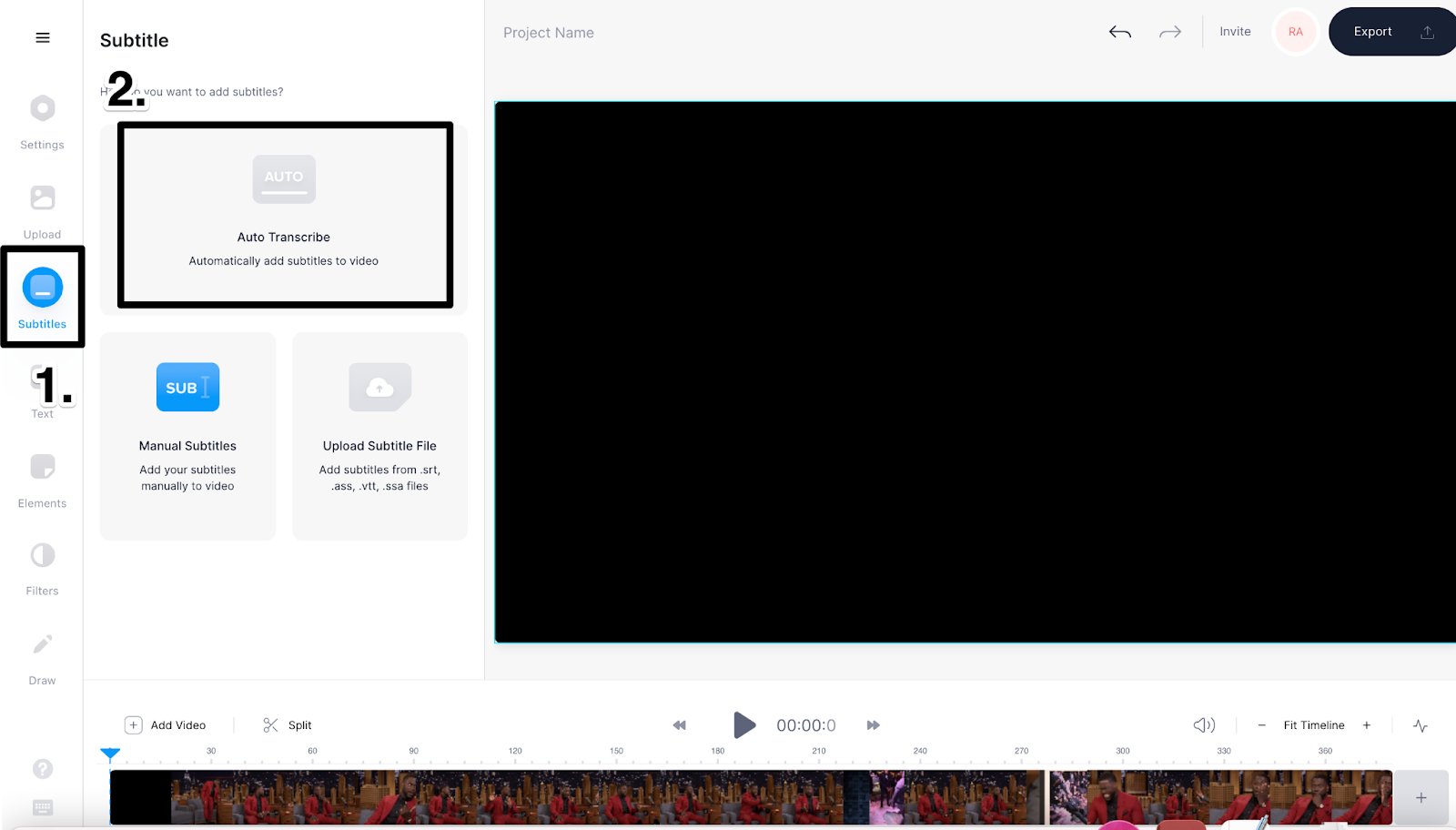
- Choose the language your video is in. This will automatically transcribe all the audio of your video to text and place it at the right timestamps.

- At this point, all your subtitles will be auto-generated. Although the VEED subtitle generator is 95% accurate, it can still make mistakes when it comes to names and other unfamiliar words. Precisely why we recommend checking the spelling and grammar using the SRT editor on your left. Just to be safe.

- Like what you see? Next, you’ll have to download the SRT file. Click on Options from the top menu bar. Make sure Download Subtitles is set in the .srt format.

Voila! You’ve effortlessly created an SRT file of your video within minutes.
What else can VEED do?
VEED comes with tons of amazing tools to simplify online video editing and transcribing. In addition to adding your SRT files, it can simplify your text and take care of everything you could possibly need, including:
- Automatically generating subtitles for videos
- Translating your video’s subtitles
- Adding audio and music visualizers
- Resizing your videos for all major social platforms
- Recording yourself and your screen with the screen recorder
- Editing your podcast videos
- Creating GIFs from your video clips
And that’s just scratching the surface!
Currently, VEED offers two pricing tiers:
- Basic — Starts at $12/month when billed annually
- Pro — Starts at $24/month when billed annually
While the Basic plan contains most of the basic-level features, including subtitles, Pro would be the better bet for those who need to create tons of videos and need more customization. Plus, downloading the SRT file is only possible with the Pro plan. What's more, you can give most of the features a test drive by signing up for a free trial account that’s perfect for 10-minute-long one-off projects.
Moving on...
You’ve created an SRT file. Excellent! Now let’s discuss how you can upload it to YouTube, Facebook, and LinkedIn.
How to Upload Your SRT File to YouTube
We totally recommend adding SRT files to all your YouTube videos. Not only will this make your content more inclusive, but it'll also help it climb higher on the SEO ladder.
Google loves videos with accurate and clear subtitles! Plus, since it can pull tags and timestamps from your video and file, your chances to become the featured video snippet improves significantly like our How to Add Subtitles to a Video Automatically (2021) video.

Here’s how to go about it:
- Open your YouTube Creator Studio.
- Click on Subtitles on your left side and select the video you want to add those captions to.

- Select the blue Add Language button to indicate the language your subtitles are in. Click on Add under the Subtitles section when a new language lineup pops up on your screen.
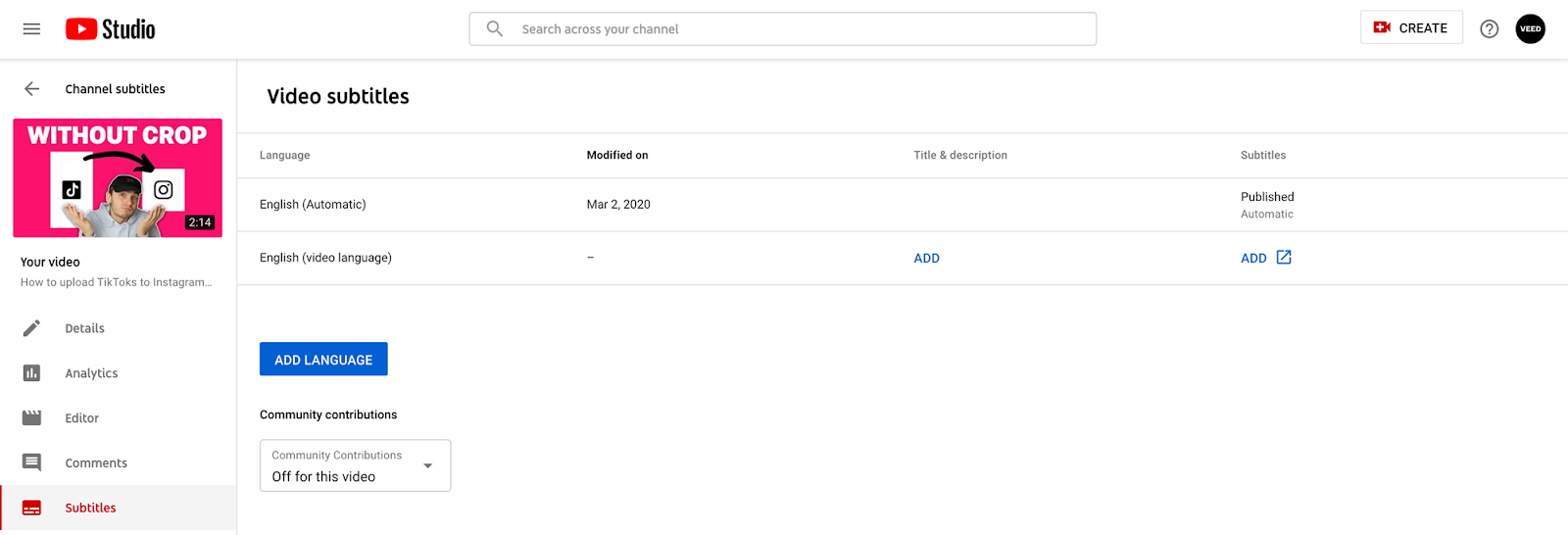
- You’ll be directed to YouTube’s subtitle editor. Here, click on Upload a file and choose the SRT file you want to upload. And you’re done!
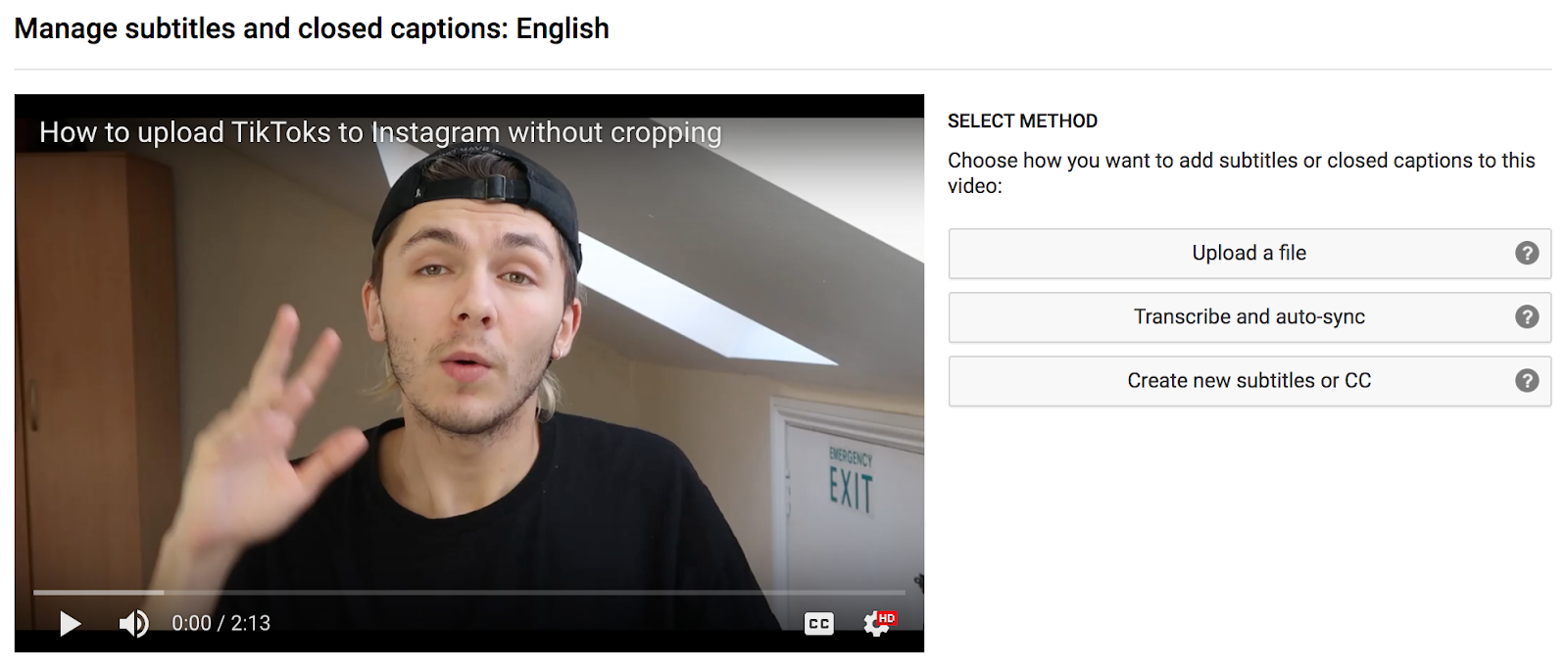
How to Upload Your SRT File to Facebook
Over 2.85 billion people actively use Facebook. That’s a MASSIVE number! So, naturally, you want to make sure your content reaches as many people as possible, which is why adding closed captions to your Facebook videos from your Facebook page is a must.
- You’ll be taken through the entire creation process when you start the upload. This is where you’ll add your SRT file.
- Click on Subtitles and caption (CC) section to upload the SRT file to your video. You can add multiple other SRT files to support different languages too.
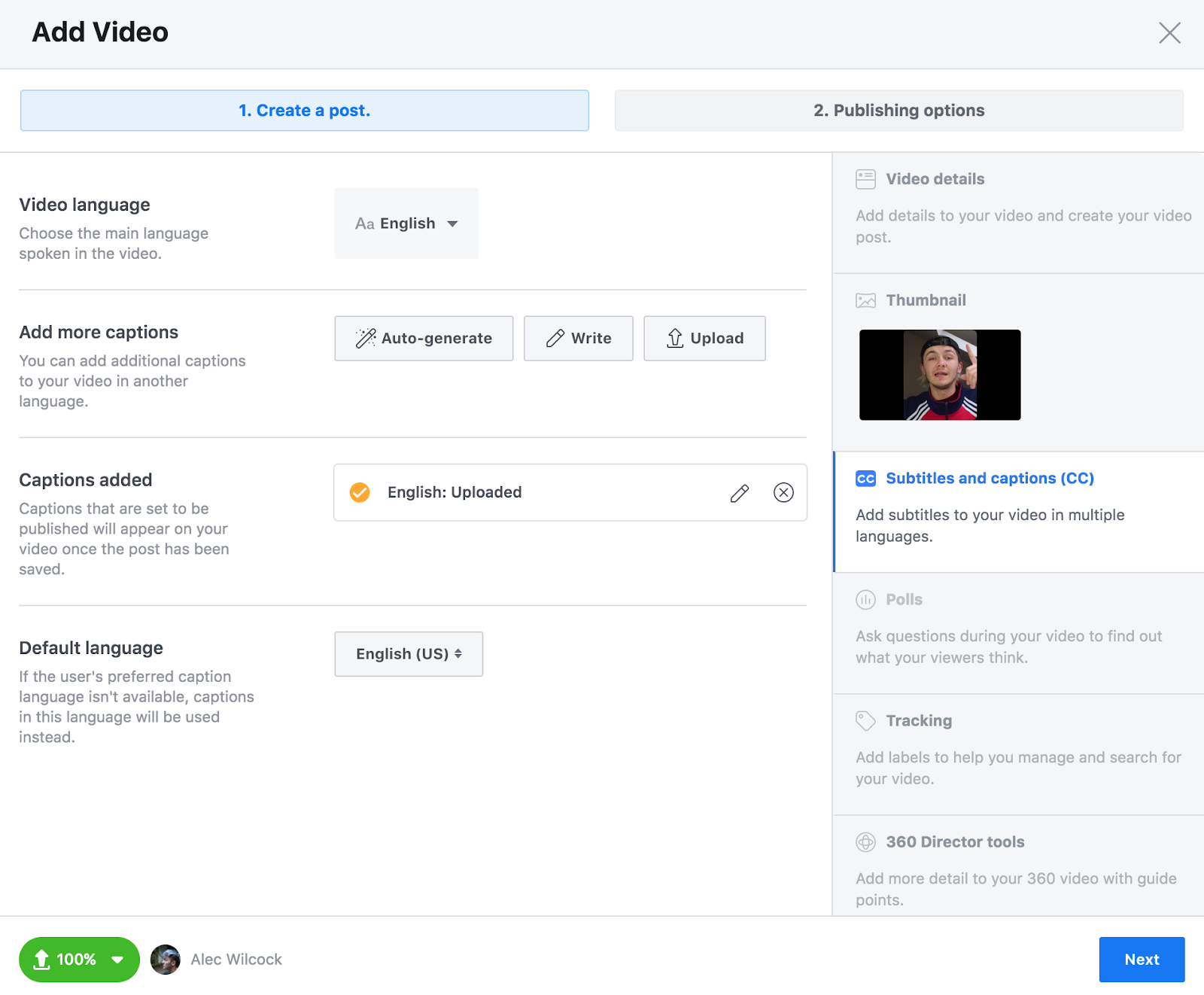
Note: If you see an error message on your screen, it means your SRT file is in the wrong format. You have to rename every SRT file depending on what language they are in and re-upload. For instance, when uploading SRT files for French, your file name can be something like Test file video.fr_FR.srt.

Unfortunately, if you want to add closed captions to your videos from your personal Facebook page, you have to follow a different set of steps. Not that it's difficult! You just have to remember a few extra steps.
- Upload a video as you normally would, i.e, click on Photo/Video from your Facebook homepage.
- Once that’s done, go to the video post and select Edit video.

- You’ll be directed to a page where you can edit the video’s thumbnail, description, and subtitles.
- Under the Captions section, click on Choose file and select the SRT file for that video.

That’s all that you need to do to activate closed captions on Facebook!
How to Upload Your SRT File to LinkedIn
LinkedIn is the holy grail for everyone in the B2B space. Not only can you use the platform to network with authoritative people in your niche, but you can also establish your expertise by posting relevant content, especially videos.
The good news is adding closed captions on LinkedIn videos is way-yyy easier than on Facebook.
- Select the video you want to upload. But instead of clicking Next, choose Edit.

- You should upload your SRT file here. Save the subtitle file to that video post.
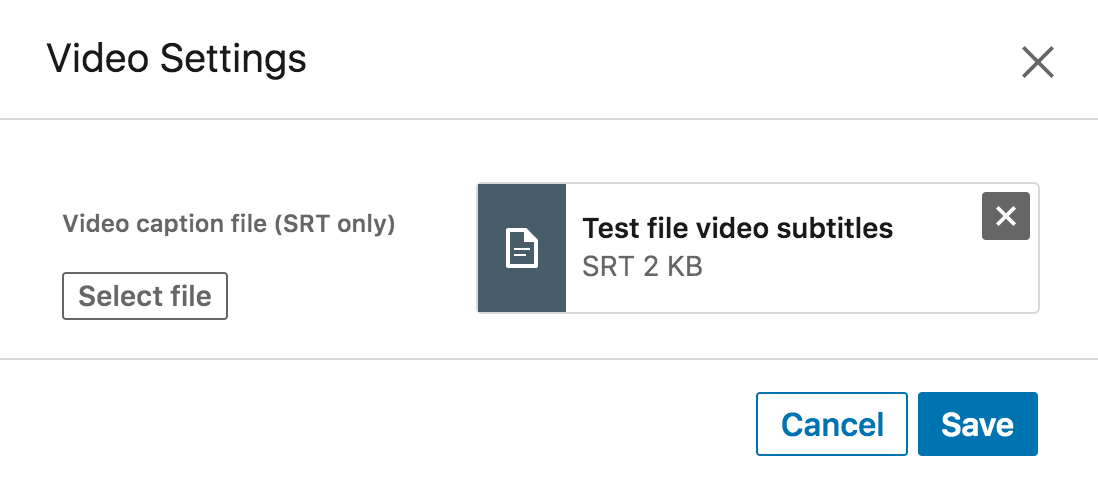
Short and sweet.
Remember, you can only add one SRT file to a video on LinkedIn. Be sure to choose a language that caters to the majority of your audience.
So that’s how you upload SRT files on YouTube, Facebook, and LinkedIn. As you can see, the process is very straightforward, and once you get a handle on things, it’ll become even easier!
Get Ready, Set, SRT!
SRT files and video are practically best friends. They can expand your reach, improve user experience, get your content to rank higher on search engines... the list is endless.
Of course, content quality is still king! Plus, you may consider creating and uploading SRT files as an additional next step that involves more effort and money, but considering the benefits it offers, you and your audience are still the winners.
Want to take your videos to the next level? Try VEED today to get the ball rolling!
![What is an SRT File? How to Create & Upload SRT Files [Complete Guide]](https://cdn.prod.website-files.com/616e938268c8f0a92cb2b540/616e938268c8f05613b2c29b_CREATE%20SRT%20FILE.jpg)


